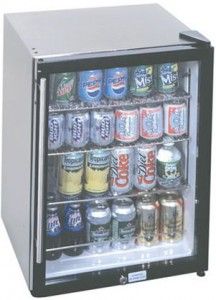Friday

BYCU
Man, if I'm ever cool again, I'm going to buy a beverage refrigerator. Two of my neighbors have 'em in their garage, but with seven kids, my garage is devoted to a regular fridge (with top freezer) and an extra freezer. I'm lucky to have three cold boxes, of course, but I am a spoiled American so I waaaaant a beverage fridge. Go here to see what got my mouth watering. * * * * * * * I guess Scotland is getting drunker and drunker. This writer laments the decline of his besotted country. He says he was forced to listen to loud and filthy and juvenile talk by two drunken morons on a train. It sounds pretty bad. But is it much worse than being around parents with younger children, who always seem to instruct in a voice loud enough so everyone else can here them, thereby comprehending what conscientious parents they are? * * * * * * * "Beer used to be easy," writes Eric Asimov. "You were a Bud guy or Miller guy, maybe even a Schlitz or Ballantine guy. Not that it mattered much, since they tasted virtually the same." Link. He then goes on to describe the various beer categories in American culture today. Quite useful and informative. Sample:
The most basic division of beers is into ales and lagers. The two differ by the type of yeast that begins fermentation, which transforms sugar into alcohol and carbon dioxide. Ales, older by far, are generally fermented at ambient temperatures and tend to be rounder, fruitier and more complex.
Lagers were discovered almost by accident. Bavarian brewers who would store their beer starter over the summer in icy Alpine caves found that a different sort of fermentation was taking place. Unlike ales, which were ready to drink shortly after brewing, these cold-brewed beers fermented more slowly and needed time to mature. They came to be called lagers, after the German word for storage, and they were simpler, sharper and livelier. In the 19th century, scientists discovered the role of yeasts in fermentation and found that ales and lagers were products of different strains. The yeasts in ale floated to the top; in lagers the yeasts sank to the bottom.
